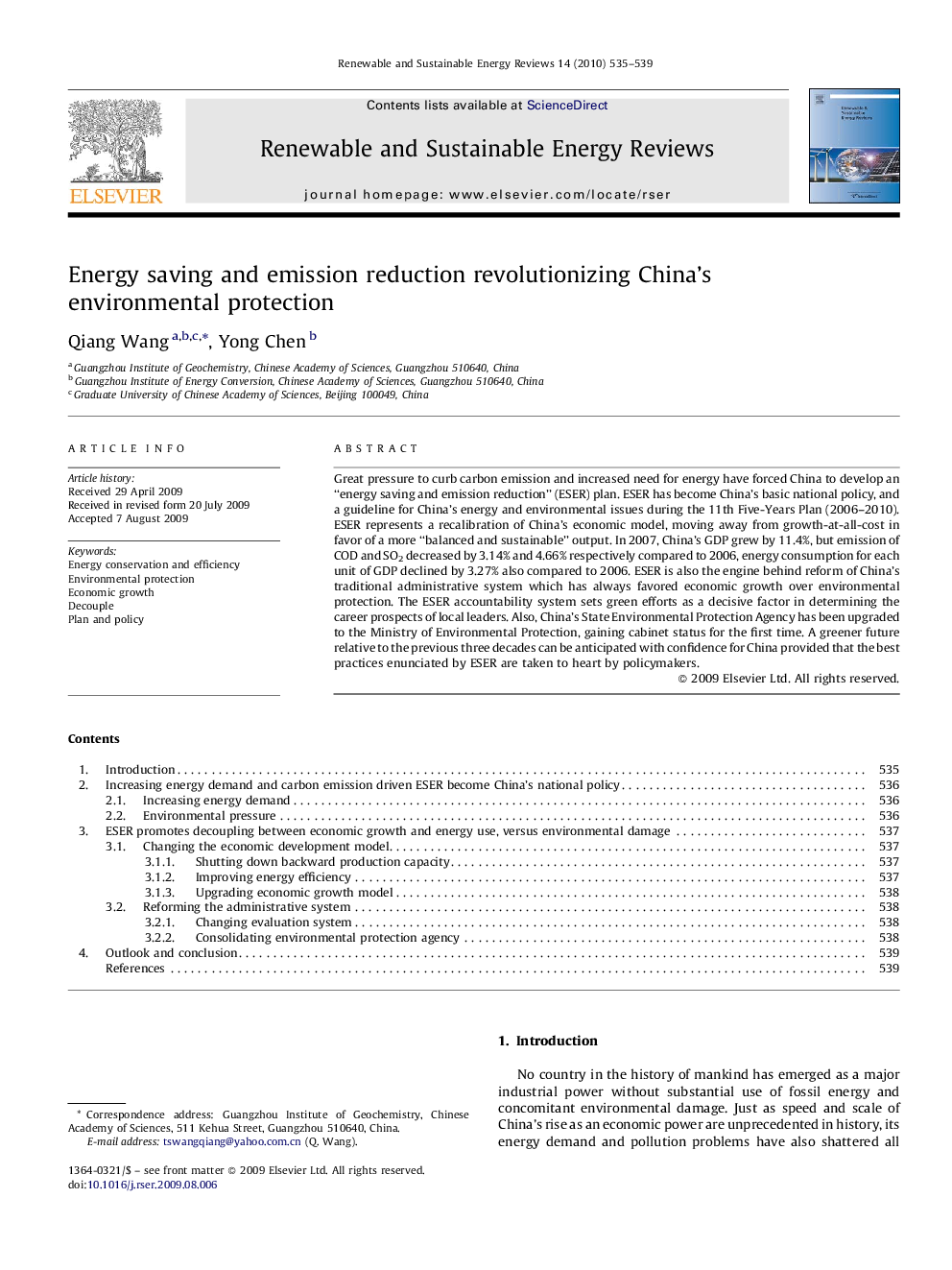| Article ID | Journal | Published Year | Pages | File Type |
|---|---|---|---|---|
| 1751934 | Renewable and Sustainable Energy Reviews | 2010 | 5 Pages |
Great pressure to curb carbon emission and increased need for energy have forced China to develop an “energy saving and emission reduction” (ESER) plan. ESER has become China's basic national policy, and a guideline for China's energy and environmental issues during the 11th Five-Years Plan (2006–2010). ESER represents a recalibration of China's economic model, moving away from growth-at-all-cost in favor of a more “balanced and sustainable” output. In 2007, China's GDP grew by 11.4%, but emission of COD and SO2 decreased by 3.14% and 4.66% respectively compared to 2006, energy consumption for each unit of GDP declined by 3.27% also compared to 2006. ESER is also the engine behind reform of China's traditional administrative system which has always favored economic growth over environmental protection. The ESER accountability system sets green efforts as a decisive factor in determining the career prospects of local leaders. Also, China's State Environmental Protection Agency has been upgraded to the Ministry of Environmental Protection, gaining cabinet status for the first time. A greener future relative to the previous three decades can be anticipated with confidence for China provided that the best practices enunciated by ESER are taken to heart by policymakers.
